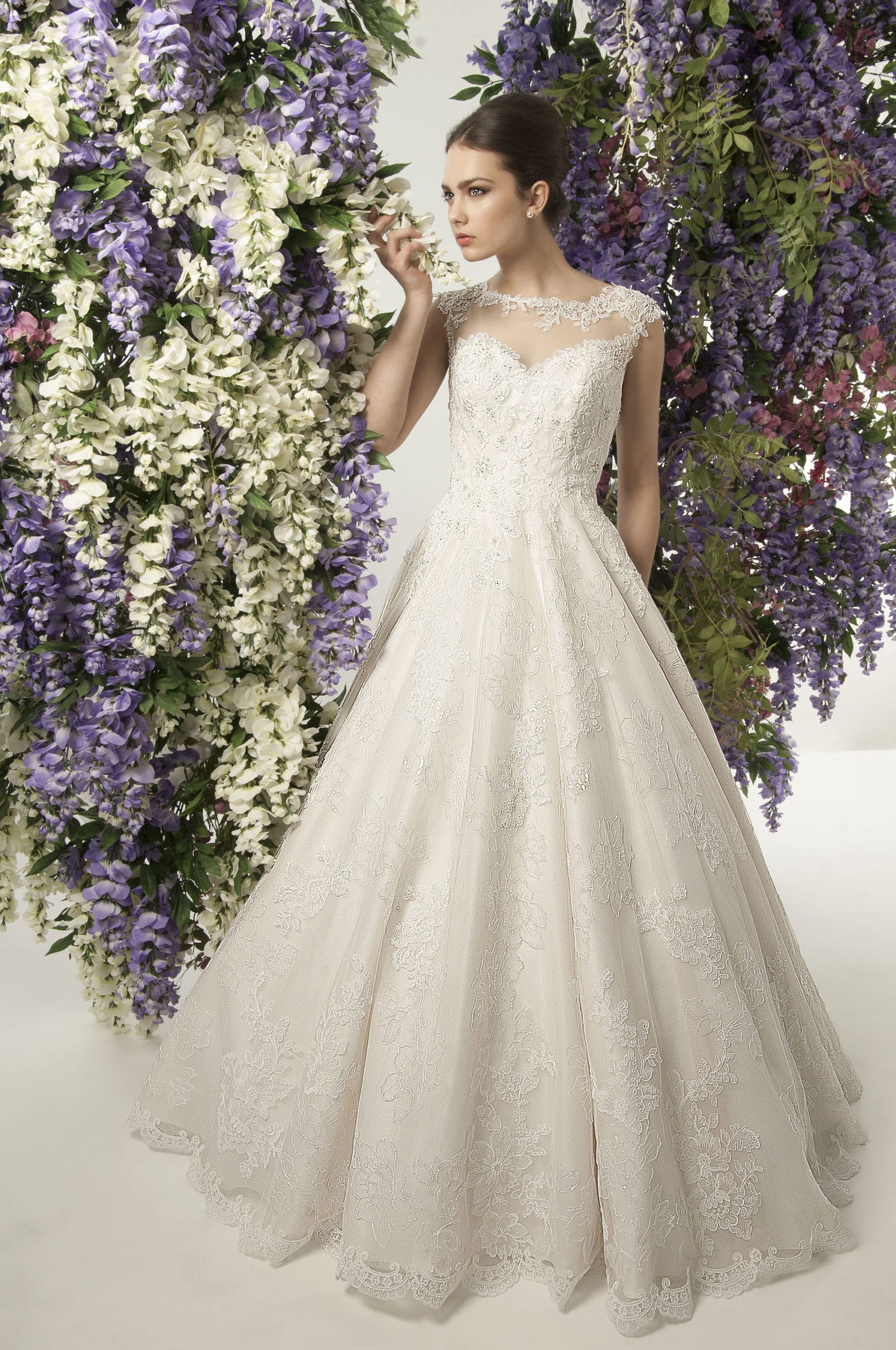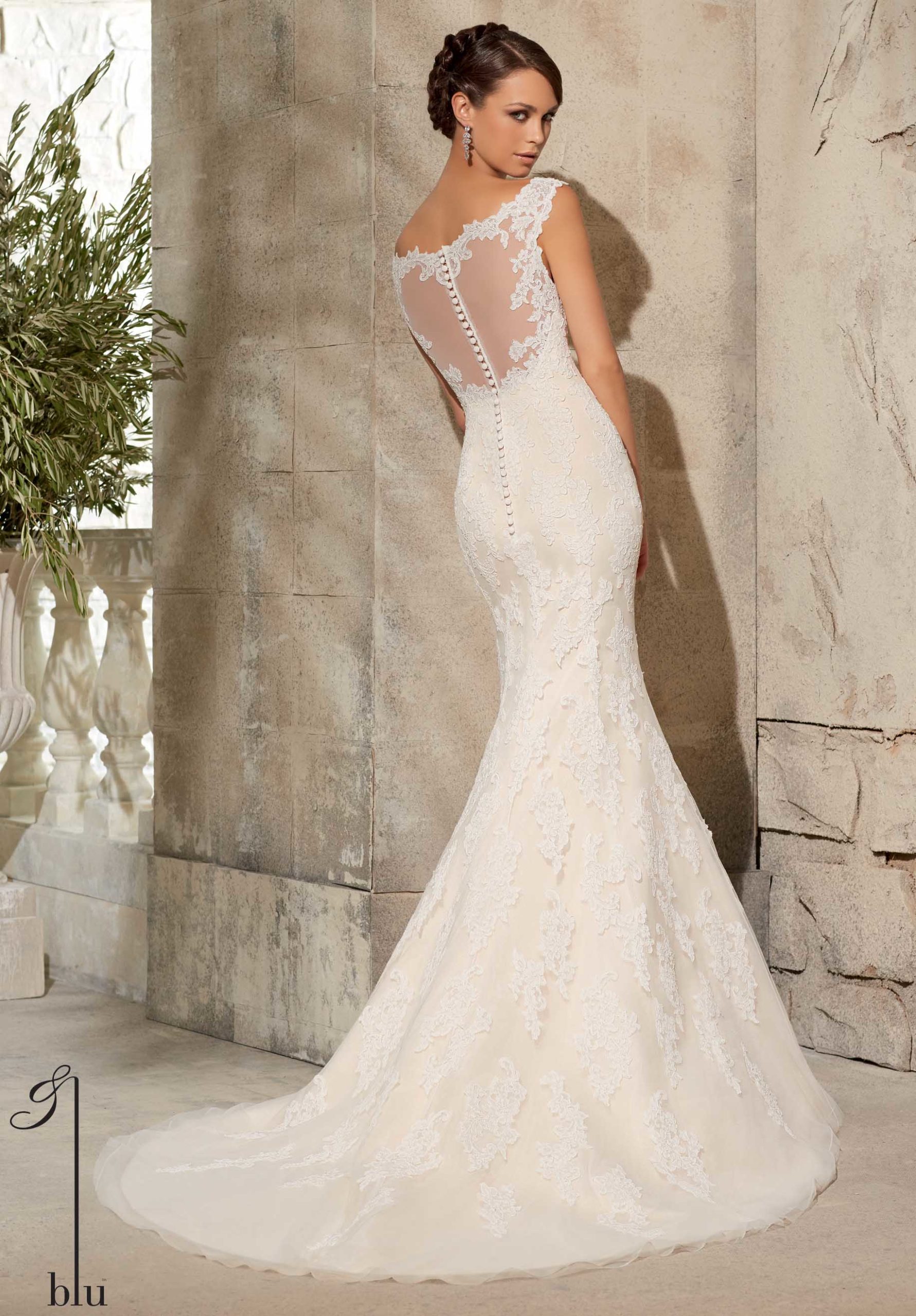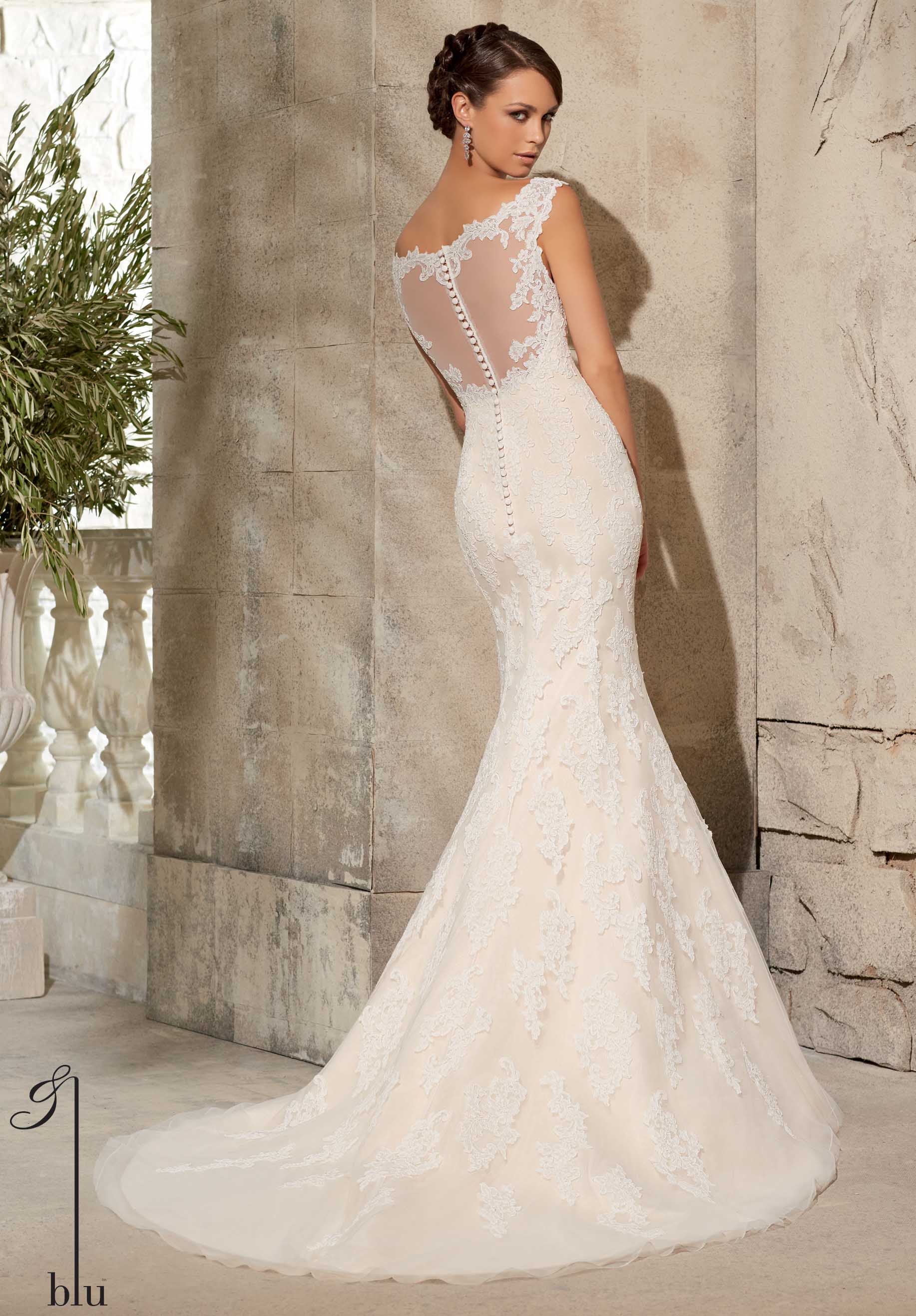
A bustle brings the back of a wedding dress off the floor so the bride is not hampered by the train during the wedding reception. Bustles are very common. Different styles of bustles can be used. The bustle may require the addition of hook and eye or ties to the wedding dress.
The bustle is created during alterations. Since bustles are so common, brides may wonder why wedding dresses do not have bustle attachments in place. The bustle requires that the hem of the dress be brought up to a height that keeps it off the floor. The back of the skirt is typically raised so that it is just above the floor. Therefore, the person doing bridal dress alterations can adjust the bustle to account for the preferred bustle style, the bride’s height, and shoes so that the bustle is the correct length.
For an over-bustle, the train is brought up on the outside of the skirt and attached to the waist of the dress with a hook and eye or button and loop. A covered button may be added to the back of the wedding dress with a small loop attached under the train. A long train may require additional hook and eye attachments. These can be camouflaged with lace appliqués or other subtle embellishments.
An under-bustle is tucking the length of the train under the wedding gown. The under-bustle sometimes is called the French or Victorian bustle. Ribbons are sewn on the inside of the dress. Different colours of ribbons often are used. After the ceremony, the bride may need assistance to tie the ribbons to make the bustle.
The bride and her assistant need to tie the matching ribbons together to draw the gown up in the bustle. A one-point French bustle uses only one pair of ribbons while the three-point bustle uses three pairs that will need to be tied. Three-point bustles are best for long trains.
An Austrian bustle uses a system of loops. The bride pulls the string in the loops, and the train is gathered upwards. Instead of folds like the other bustles, this is a gathering of the fabric. A royal bustle uses multiple ties. The fabric is gathered up at each of these points. So, it’s somewhat like an Austrian bustle with three or more points. A bubble hem is a folding up of the length of the dress at the hem. This method may require numerous bustle points for a long train.
The cost of a bustle can vary by type and the number of points needed to be added to the dress to create the bustle. The bride will want to go to a room away from her guests to bust up the dress, especially for the bustles that require her to lift her dress to access the underside. Some wedding dress seamstresses recommend the bride have two or three women ready to help her bustle her dress after the ceremony.
A wedding dress is a crucial way to express yourself during your special day. Our blog at Best for Bride contains many helpful wedding dress advice, like choosing the style and learning about modern trends.













